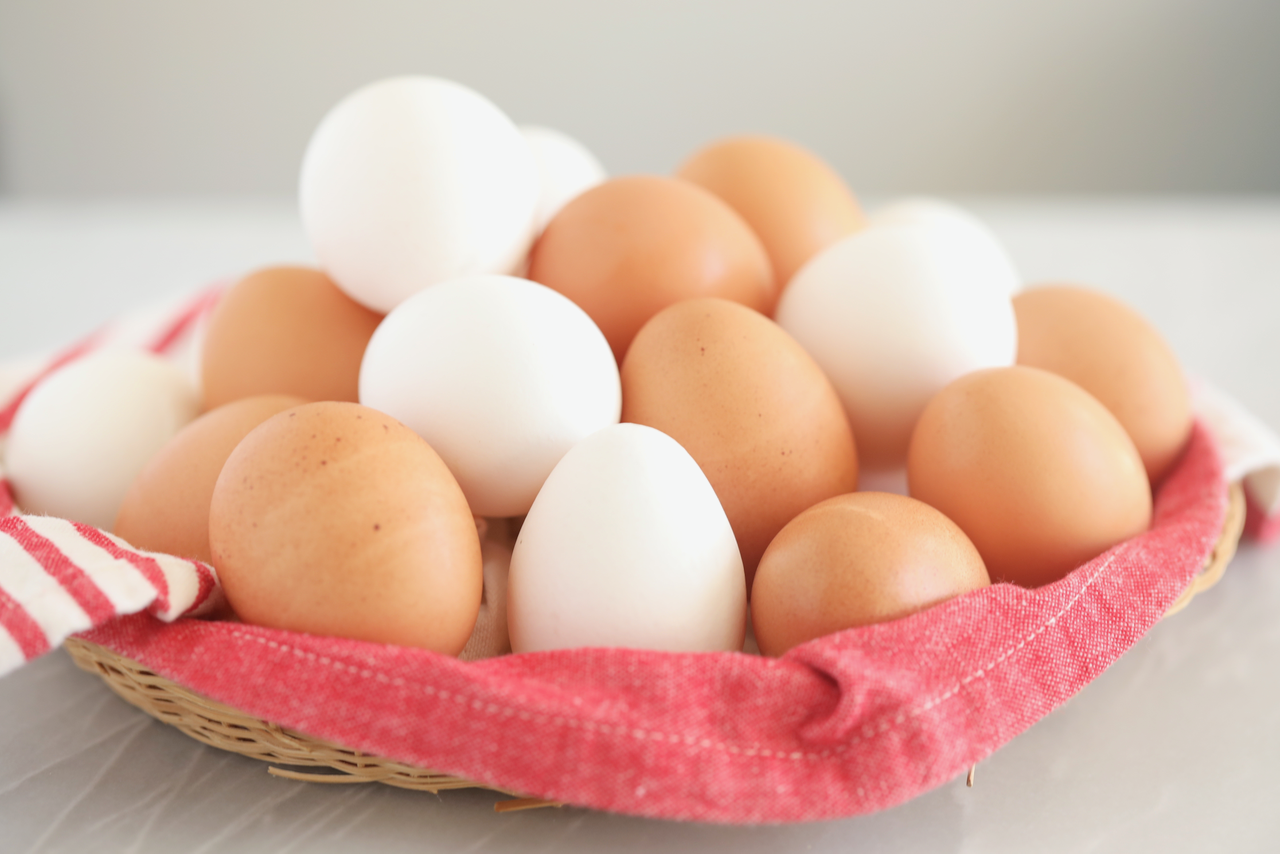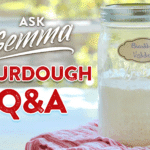
This post may contain affiliate links. Please see my full disclosure for details.
Hi Bold Bakers!
When training to become a professional chef, one of the first things we learn — and put into practice — is a very high standard of food safety. From buying the right quality of ingredients to storing and baking with things like dairy and eggs, there is a method to the madness and there are times when it is, in fact, safe to use and eat raw eggs.
If you want to know the facts about raw eggs and how to ensure they are being used in the correct manner, keep on reading! I get tons of inquiries about working with raw eggs so I’m really excited to teach you all about it!
Is It Safe To Eat Raw Eggs?
For years both egg whites and yolks have been eaten raw. Besides being high in nutritional value, raw egg yolks and whites are super gentle on the digestive system and as long as the egg is good quality and fresh they are 100% safe to eat. If you are wondering, “What about salmonella?” fresh raw eggs from a quality source are even less likely to contain salmonella. Studies show only 1 in 30,000 eggs even has a salmonella problem. Healthy chickens with lots of sun exposure aren’t going have much salmonella to pass on to their eggs.
Just know that a healthy body is equipped to fight bacteria on its own. No matter what we eat, whether it’s raw or cooked, we encounter bad bacteria all the time (like on vegetables, for instance). The trick to avoiding salmonella in eggs is buying them fresh and using them in the right amount of time.
Are Raw Eggs Good For You?
Raw eggs, as opposed to cooked, are packed with healthy protein and a variety of vitamins, minerals, and loads of vitamins like A, D, B2, B6, B9, B12, iron, and zinc. Not to mention omega 3 and 6 fatty acids, making them a great food in a healthy diet. When eggs are used raw they retain all of this natural goodness. When cooked, some of the omegas and vitamins are retained, but at least 1/4 are lost in the cooking process.

How to Ensure the Eggs Are Bacteria Free
Cooking eggs and meat thoroughly kills the salmonella bacteria, as it can not survive heat-treatment. Pasteurized (heat-treated) eggs may be available in your area, and are a good choice for those who are frail or immune-compromised.
Sometimes you see raw eggs mixed with some kind of acid, too, as this kills the bacteria in the eggs without cooking or heat treating. Acids, such as vinegar, lemon, lime juice also kill bacteria. This is commonly done when making hollandaise sauce and Ceaser dressing.
In the past, I have also heat treated egg whites when adding into a no-bake recipe. To do this, I whisk the egg whites constantly over very low heat until the egg whites are foamy but still clear. This slight heat will also kill any bacteria you may be wanting to avoid. See my recipe for No Bake Lemon Meringue Cheesecake.
What Kinds of Desserts Use Raw Eggs?
I think the sheer number of desserts that require raw egg is really a testament to how safe they are to eat. Some of my favorite desserts including raw egg are tiramisu, chocolate mousse, and no-bake cheesecakes. Again, the most important thing is that you use fresh, high-quality eggs to make these desserts. The raw egg is not only harmless but vital to the texture of so many desserts. From the light fluffiness of whipped egg white to the richness provided by egg yolks, I think there is 100% a time and place for uncooked eggs.
Try These Recipes!
Don’t forget to follow Bigger Bolder Baking on Pinterest!







Hi Gemma,
You might find this amusing: when I was growing up & stayed with my grandparents, grandma always said you shouldn’t eat raw cookie dough because the raw eggs would give you worms. But she always let me lick the beaters and clean out the bowl when we made a cake. It wasn’t until I was an adult that I saw how funny that was.
I really like your recipes, most of them are so easy and simple!
I remember as a child we always made homemade eggnog. I never go sick from drinking it. I also read recently that we should never wash the eggs before using them. The reason is when a chicken lays an egg, as she’s laying it she secretes a liquid one them. This kinda seals the egg so bacteria can’t enter the egg through the shell, and if you wash them, you would remove that protection barrier, and bacteria would be able to enter in the egg. It is probably why on a farm they don’t refrigerate them and they keep for… Read more »
What about the avidin they say is in the raw whites? And it’s said to bind with biotin and cause a deficiency.
Hi Brian,
Thanks for your comment. I appreciate that because it’s not everyones point of view :).
In Ireland we don’t even refrigerate our eggs.
Best,
Gemma.
My recipe calls for beating a raw egg and it is added to powdered sugar as a filling for a banana split dessert. I love it but still hesitated to serve it to people with any health issue.
Hi Gemma,
I knew it you can eat egg raw but i still have doubt. Thanks for clearing it. But eating egg raw is nearly impossible for me 🙂 .